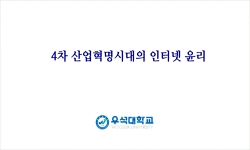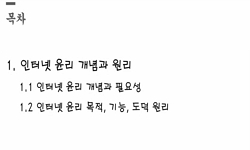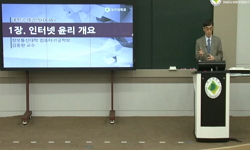본 연구는 인터넷중독 청소년의 신체활동 참여 정도와 인터넷 사용 특성에 따른 신체활동에 대한 태도, 사회적 지지, 자기통제력 수준의 차이에 어떠한 관계가 있는가를 분석함으로써, 청소...
http://chineseinput.net/에서 pinyin(병음)방식으로 중국어를 변환할 수 있습니다.
변환된 중국어를 복사하여 사용하시면 됩니다.
- 中文 을 입력하시려면 zhongwen을 입력하시고 space를누르시면됩니다.
- 北京 을 입력하시려면 beijing을 입력하시고 space를 누르시면 됩니다.
인터넷중독 청소년의 신체활동 참여와 인터넷사용 특성에 따른 신체활동에 대한 태도, 사회적 지지, 자기통제력 수준의 차이 = Difference in Physical Activity Attitude, Social Support, and Self-control according to Levels of Physical Activity Participation and Characteristics of Addition among Internet-addicted Adolescents
한글로보기https://www.riss.kr/link?id=T10978863
- 저자
-
발행사항
서울 : 한국체육대학교 사회체육대학원, 2007
-
학위논문사항
학위논문(석사) -- 한국체육대학교 사회체육대학원 , 생활체육학과 , 2007. 8
-
발행연도
2007
-
작성언어
한국어
-
주제어
인터넷중독 ; 신체활동에 대한 태도 ; 신체활동 참여 ; 사회적 지지 ; 자기통제력
-
KDC
334.9 판사항(4)
-
발행국(도시)
서울
-
형태사항
iii, 98p. ; 26cm
-
일반주기명
참고문헌: p. 68-86
- 소장기관
-
0
상세조회 -
0
다운로드
부가정보
국문 초록 (Abstract)
본 연구는 인터넷중독 청소년의 신체활동 참여 정도와 인터넷 사용 특성에 따른 신체활동에 대한 태도, 사회적 지지, 자기통제력 수준의 차이에 어떠한 관계가 있는가를 분석함으로써, 청소년의 인터넷중독 문제를 해소하기 위한 기초자료를 제공하는데 그 필요성과 목적이 있다.
연구대상의 개인적 특성은 성별, 중학교 2학년으로 설정하였고, 독립변인은 신체활동 참여 정도(주당 참여 횟수, 하루평균 신체활동 참여 시간), 인터넷 중독 원인(접근 용이, 온라인상 우월감, 오락적 요소), 주요 인터넷 사용 활동(학습사이트, 정보검색, 게임, 채팅), 인터넷중독 유형(채팅 중독, 게임 중독, 정보검색 중독, 사이버거래 중독)으로 설정하였고, 종속변인은 신체활동에 대한 태도, 사회적 지지(정서·평가적 지지, 정보·물질적 지지), 자기통제력(정서·사려숙고, 과제·유혹저항, 친구·교사관련)으로 설정하였다.
연구대상은 서울 송파 지역에 소재하고 있는 중학교 2학년이 조사대상이며, 3개의 중학교를 편의표집하여 188명을 분석대상으로 하였다.
조사 도구는 설문지를 사용하였으며, 신체활동에 대한 테도 설문지는 원지연(2005)의 설문지를 인터넷중독에 대한 설문지는 한국정보문화진흥원(2005)의 설문지를 사회적 지지 설문지는 박지원(1985)의 설문지를, 자기통제력 설문지는 이경님(2000)의 설문지를 기초로 하여 본 연구 수행에 적합한 항목만을 선별하여 설문지를 작성하였다. 수집된 자료의 분석에 있어서는 SPSS WIN V 13.0 프로그램을 이용하여 다음과 같은 분석방법을 사용하였다.
첫째, 조사대상자의 성별에 따른 신체활동 참여 정도와 선체활동에 대한 태도, 사회적 지지, 자기통제력의 차이를 알아보기 위해 χ^(2)검증과 t검증을 실시하였다.
둘째, 신체활동 참여 정도와 인터넷 사용 특성에 따른 신체활동에 대한 태도, 사회적 지지, 자기통제력의 차이를 알아보기 위해 t검증과 일원변량(one-way ANOVA)분석을 실시하였으며 일원변량분석에 대한 사후검증으로는 Scheffe 검증을 실시하였다.
이상과 같이 인터넷중독 청소년의 신체활동 참여 정도와 인터넷 사용 특성에 따른 신체활동에 대한 태도, 사회적 지지, 자기통제력 수준의 차이에 대하여 분석한 결과는 다음과 같다.
첫째, 성별에 따른 신체활동 참여, 신체활동에 대한 태도, 사회적 지지, 자기통제력에 차이에 있어서는 성별에 따른 자기통제력에서 통계적으로 유의한 차이가 있다.
둘째, 신체활동 참여 정도에 따른 선체활동에 대한 태도, 사회적 지지, 자기 통제력의 차이에 있어서는 사회적 지지에서는 신체활동 주당 참여 횟수에 따라 사회적 지지의 정서·평가적 지지에 있어서 차이가 있다.
셋째, 인터넷중독 원인에 따른 신체활동에 대한 태도, 사회적 지지, 자기통제력의 차이에 있어서는 자기통제력의 하위 요인인 과제·유혹저항에 있어서 통계적으로 차이가 있다.
넷째, 주요 인터넷 사용 활동에 따른 신체활동에 대한 태도, 사회적지지, 자기통제력의 차이에 있어서는 사회적 지지, 자기통제력에 있어서 통계적으로 유의한 차이가 있다.
다섯째, 인터넷중독 유형에 따른 신체활동에 대한 태도, 사회적 지지, 자기통제력의 차이에 있어서는 유의한 차이가 있다.
다국어 초록 (Multilingual Abstract)
The necessity and purpose of this study was to provide fundamental material for relieving the Internet addiction among adolescents by analyzing the relationship between the differences in the level of dependent variables according to the level of part...
The necessity and purpose of this study was to provide fundamental material for relieving the Internet addiction among adolescents by analyzing the relationship between the differences in the level of dependent variables according to the level of participation in physical activity and characteristics of the Internet use.
The personal characteristics of the study subjects were the gender and the grade (it was fixed to the second grader of the middle school). The independent variables were the level of participation of physical activity(weekly participation, daily duration time). the causes of the Internet addiction(accessibility, sense of superiority in the Net, entertaining factor), major Internet use behavior(e-learning, information searching, game and chatting) and the types of the Internet addiction(chatting addiction, game addiction, information searching addiction and online shopping addiction). The dependent variables were the attitude toward athletic action, social upholding (emotional and estimative support, informational and material backing)and self-control ability(emotional and considerate meditation, resistance to assignment and seduction, self-control connected with friends and teachers).
The subjects of this study were second graders at middle school located in Songpa area, I conveniently selected 3 middle schools and finally analyzed 188 samples.
The tool of this research was the questionnaire. For the questionnaire about the attitude toward physical activity, I employed Ji-Yeon, Won(2005)'s paper, to find out about Internet addiction, I utilized the questionnaire by KADO(Korea Agency Digital Opportunity & Promotion, 2005), as the social support questionnaire, I made up questions based on Ji-Won, Park(1985)'s research, and as the self-control questionnaire, I selected that of Kyung-Nim, Lee(2000) and made the final questionnaire by selecting appropriate items from those.
To analyze the collected data, I employed following methods with the use of SPSS WIN v13.0.
First, to find out the differences among the degree of participation in athletic activity, the attitude toward physical activity, social support and self-regulation according to the gender, I executed χ^(2) test and t-test.
Second, the attitude toward physical activity, social back-up and self-regulation in accordance with the degree of participation and features of the Internet use, I performed t-test, one-way ANOVA and as the post-hoc analysis, Scheffe was done.
Like the above, the results of analyzing the differences among the attitude toward physical play, social support and self-control in accordance with the degree of participation and features of the Internet use were as follows:
First, as for the attitude toward physical activity, social support and self-management by the gender, statistical difference appeared in the self-control.
Second, as for the conduct toward athletic activity, social support and self-control according to the degrees of participating in athletic activity, the social back-up according to weekly participation in physical activity emotional and evaluative support showed difference.
Third, as for the behavior toward bodily act, social support and self-control according to the causes of the Internet addiction, the resistance to assignment and temptation, the subfactor of the self-control indicated statistical gap.
Fourth, as for the attitude toward physical activity, social support and self-management according to the major action of the Internet use, the social support the self control revealed statistical change.
Fifth, as for the behavior toward athletic activity, social back-up and self-control by the types of the Internet addiction, no difference demonstrated.
목차 (Table of Contents)
- 목차 = ⅰ
- 국문요약
- Ⅰ. 서론 = 1
- 1. 연구의 필요성 및 목적 = 1
- 2. 연구의 문제 = 4
- 목차 = ⅰ
- 국문요약
- Ⅰ. 서론 = 1
- 1. 연구의 필요성 및 목적 = 1
- 2. 연구의 문제 = 4
- 3. 연구변인 및 가설 = 5
- 4. 용어의 정의 = 6
- 5. 연구의 제한점 = 8
- Ⅱ. 이론적 배경 = 10
- 1. 청소년기의 특성 = 10
- 2. 청소년기의 사회적 지지 = 13
- 3. 청소년기의 자기통제력 = 22
- 4. 청소년기 신체활동의 발달적 가치 = 25
- 5. 인터넷중독 = 28
- 6. 선행연구 = 39
- Ⅲ. 연구방법 = 44
- 1. 연구대상 = 44
- 2. 연구도구 = 46
- 3. 자료분석 방법 = 48
- Ⅳ. 연구 결과 = 49
- 1. 성별에 따른 신체활동 참여 정도, 사회적 지지, 자기통제력의 차이 = 49
- 2. 신체활동 참여 정도에 따른 신체활동에 대한 태도, 사회적 지지, 자기통제력의 차이 = 52
- 3. 인터넷중독 원인에 따른 신체활동에 대한 태도, 사회적 지지, 자기통제력의 차이 = 55
- 4. 주요 인터넷 사용 활동에 따른 신체활동에 대한 태도, 사회적 지지, 자기통제력의 차이 = 57
- 5. 인터넷증독 유형에 따른 신체활동에 대한 태도, 사회적 지지, 자기통제력의 차이 = 60
- Ⅴ. 논의 및 결론 = 63
- 참고문헌 = 68
- 부록 = 87
- Abstract = 95










